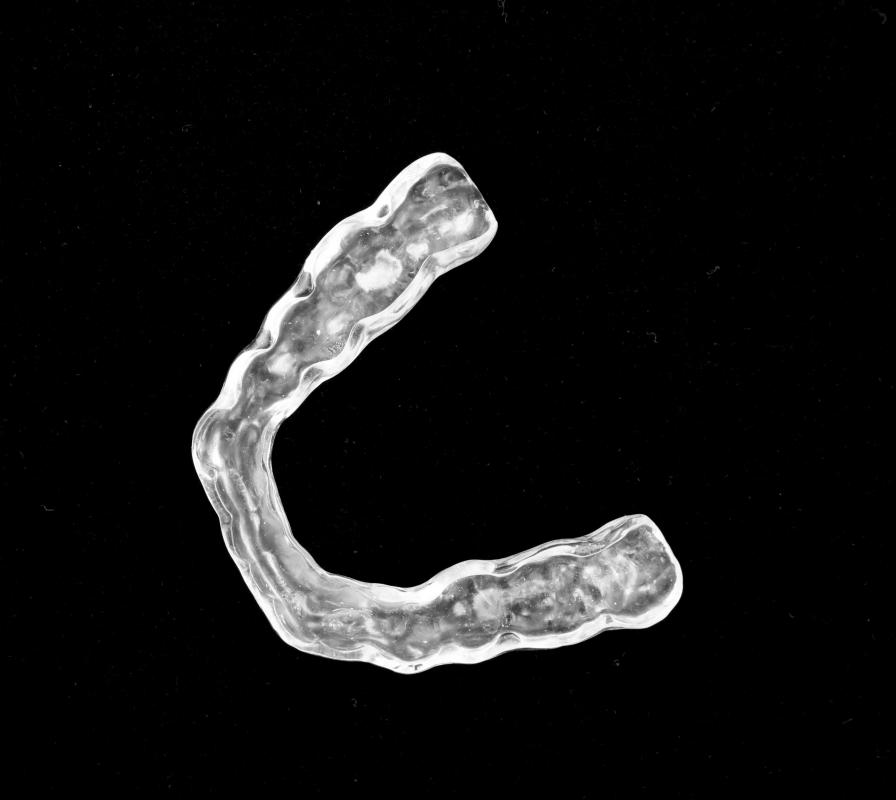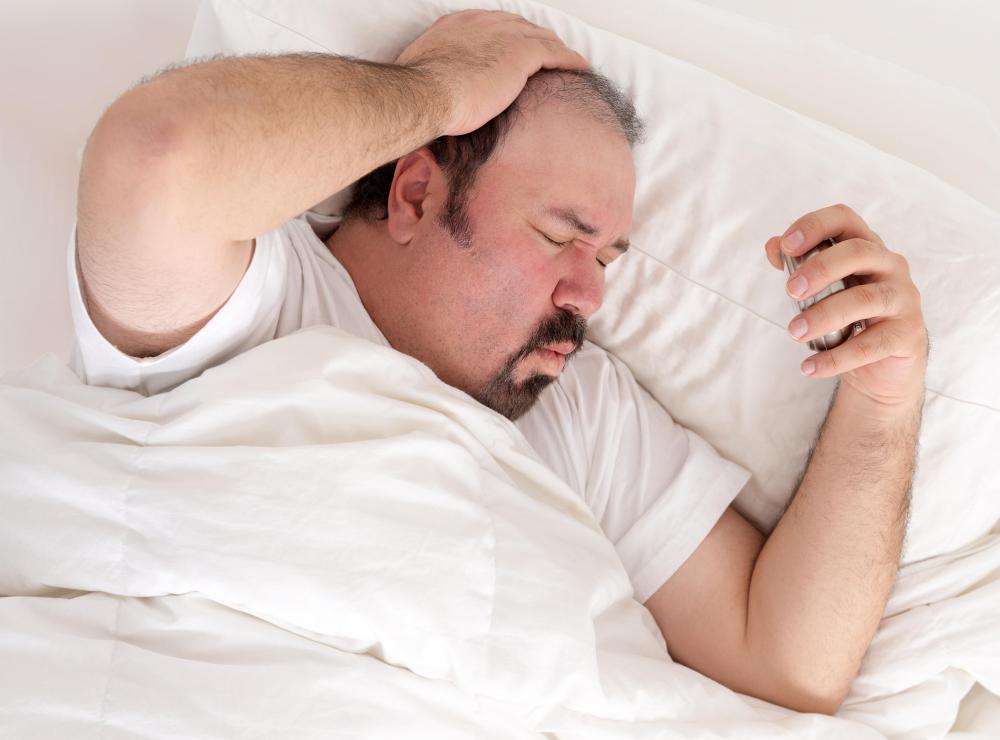At TheHealthBoard, we're committed to delivering accurate, trustworthy information. Our expert-authored content is rigorously fact-checked and sourced from credible authorities. Discover how we uphold the highest standards in providing you with reliable knowledge.
What is a Sleep Apnea Mouth Guard?
A sleep apnea mouth guard is a plastic device that, when worn in a person’s mouth at night, aids that sleeper in breathing. Apnea is a condition in which internal portions of the nose and mouth press against the throat and prevent breathing. These guards are typically made by dentists to match the mouth of the individual with the condition.
Apnea is typically experienced at night while the sufferer is lying down. The obstruction of the air passage may be partial or complete depending on the severity of the condition. Those that experience this condition tend to be overweight, older, or have short necks.

A partial obstruction of air flow may be identified by the loud snoring sound it produces. This happens, in part, because muscles of the mouth and nose relax, making it difficult for air to pass. As the body struggles to bring air down into the lungs through the small opening in the back of the mouth, the soft pallet and tongue vibrate against the throat.

Individuals with sleep apnea may experience a great deal of waking during the night, or feel that they have not received a good night’s sleep. When the body senses that it is not taking enough air into the lungs, it will rouse the sleeper so that the muscles of the mouth and nose tighten and open the throat. This may result in the person waking fully or returning to a lighter level of sleep, in which the body experiences a reduced degree of rest.
Initial treatments of apnea typically involve machines that create continuous positive air pressure (CPAP) machines. These include a breathing-assistance machine, a mask, and a tube that fits into the wearer’s mouth during the night. Many patients fail to use these with consistency due to the loud noise created by the machine, and the discomfort caused by the face mask and breathing tube. A sleep apnea mouth guard is an alternative to CPAP machines, and some patients find them easier to use and more helpful in correcting breathing problems.
A sleep apnea mouth guard may also be known as a snore guard. There are many types of guards available, and some are specific to the company that manufacturers them. A patient should decide, together with his or her dentist, the right type of product to purchase.
Most mouth guards are classified in two categories: fixed-jaw and adjustable. Fixed-jaw snore guards maintain one position of forward protrusion for the lower jaw. They move the jaw muscles between three and five millimeters away from the throat, which is often enough to allow the patient to breathe easily during the night.
A cast, or mold, can be made of the patient’s upper and lower teeth and sent to a laboratory where the fixed-jaw guard will be fashioned. Patients are also often asked to bite into a wax mold to create a bite registration. This is done with the lower jaw extended forward in a manner that is comfortable. A one-piece mouth guard is then made, that will recreate an open position in the patient’s throat during sleep to prevent the jaw from sliding backward and blocking airways.
Adjustable snore guards often begin with the jaw in the same location as the fixed-jaw devices. They may be modified over time, however, to increase the advancement of the lower jaw as those muscles learn to relax and stretch. This is generally accomplished by assembling the device in two pieces, which fit the upper and lower portions of the mouth. These two pieces are then connected via wires or plastic bands that may be moved. This type of guard has the added benefit of drastically improving a patient’s ability to breathe over a prolonged amount of time.
Generally, sleep apnea should be diagnosed by a trained physician. Self-diagnoses are often misleading, as snoring and frequent night waking may be symptoms of other conditions. It can be dangerous to attempt to purchase a sleep apnea mouth guard over the Internet without the direction and assistance of a dentist. These devices typically work best when they are fitted to the specific mouth of the wearer.
AS FEATURED ON:
AS FEATURED ON:












Discuss this Article
Post your comments